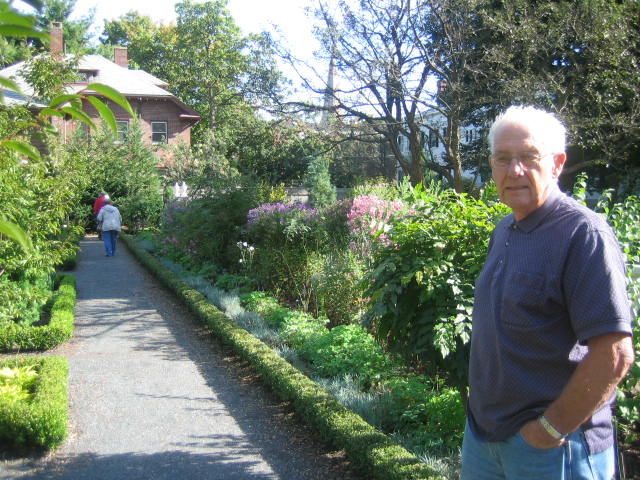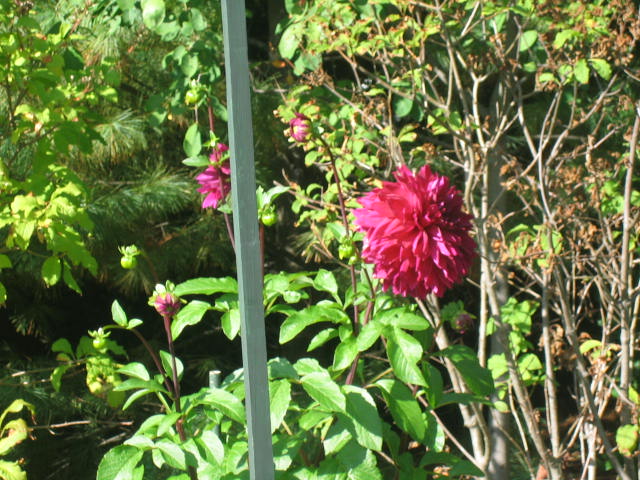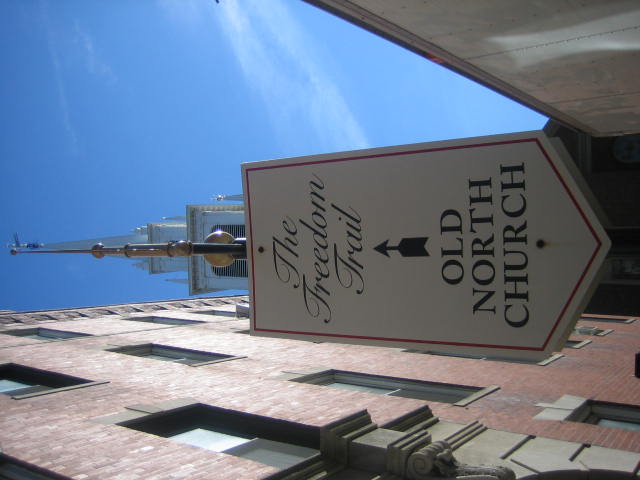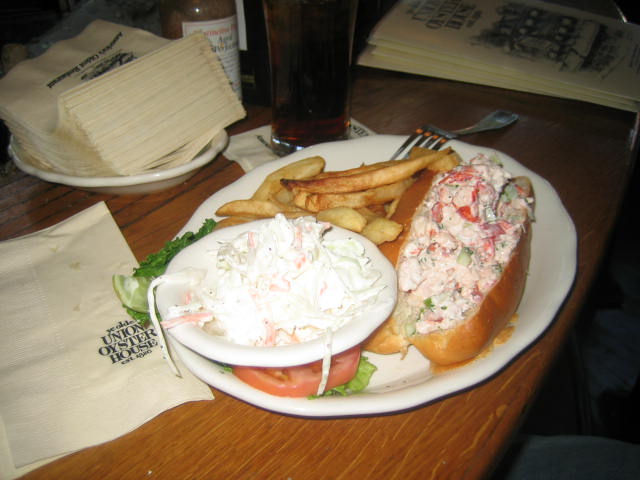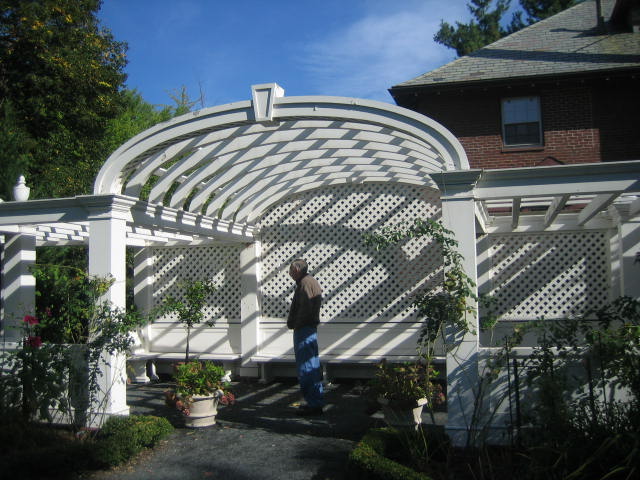Back To Boston

The largest city in New England, Boston is considered the unofficial economic and cultural center of the entire New England region.
The city of Boston, which had an estimated population of 596,763 in 2006, lies at the center of America's eleventh-largest metropolitan area, known as Greater Boston, home to over 5.8 million people.
It is also part of a wider region that includes the nearby cities of Worcester, Providence, and Manchester, with a population of 7.4 million. Residents of Boston are called Bostonians.
Boston was founded on September 17, 1630 by Puritan colonists from England. Del was there!
The Puritans of the Massachusetts Bay Colony are sometimes confused with the Pilgrims who founded Plymouth Colony ten years earlier in what is today Bristol County, Plymouth County, and Barnstable County, Massachusetts. The two groups are historically distinct and differed in religious practice. The separate colonies were not united until the formation of the Province of Massachusetts Bay in 1691.


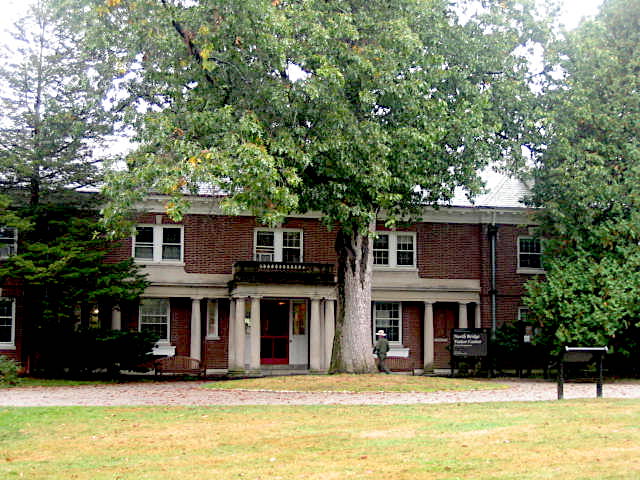
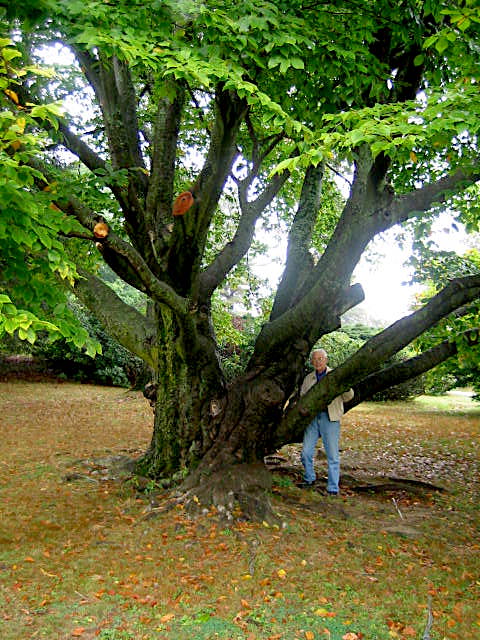



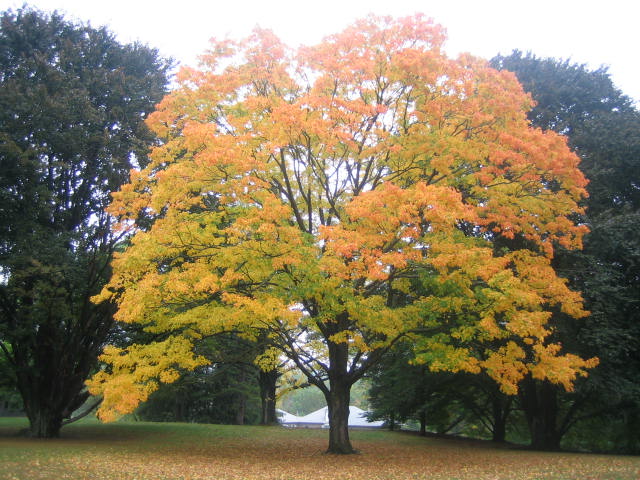
Authors Ridge In Sleep Hollow Cemetery Massachusetts
Did You Know? - Sleepy Hollow Cemetery is a cemetery located on Bedford Street near the center of Concord, Massachusetts. The cemetery is the burial site of a number of famous Concordians, including some of the United States' greatest authors and thinkers, especially on a hill known as "Author's Ridge."
Sleepy Hollow was designed in 1855 by noted landscape architects Cleveland and Copeland, and has been in use ever since. People are still being buried there. The back of the newer portion of the cemetery leads to a path system which connects to the Great Meadows National Wildlife Refuge.
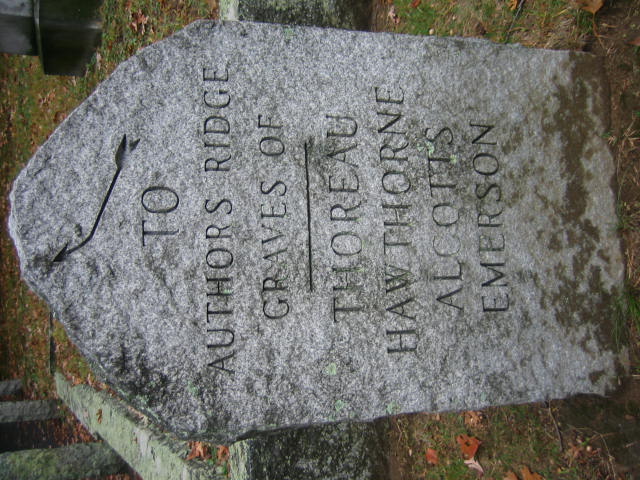

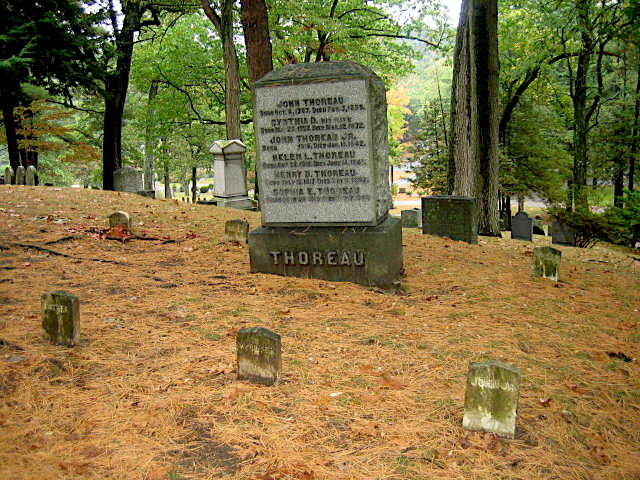
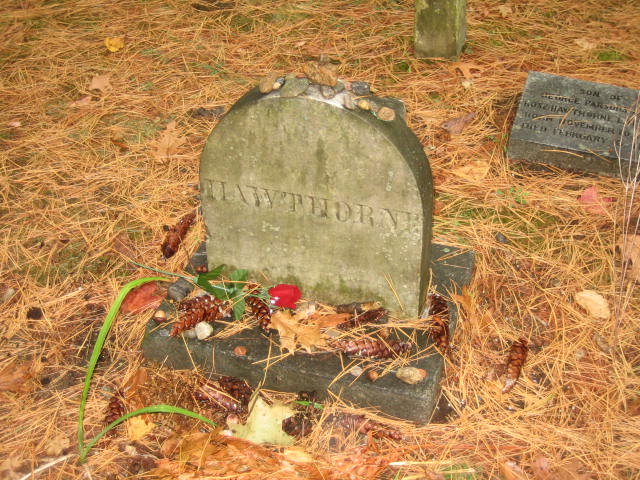
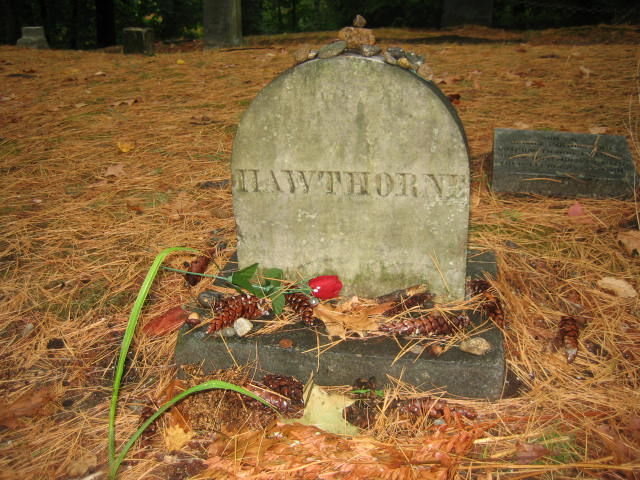

Did You Know? - Nathaniel Hawthorne was born on July 4, 1804, in Salem, Massachusetts, where his birthplace is now a museum.
William Hathorne, who emigrated from England in 1630, was the first of Hawthorne's ancestors to arrive in the colonies.
After arriving, William persecuted Quakers. William's son John Hathorne was one of the judges who oversaw the Salem Witch Trials.
Having learned about this, the author may have added the "w" to his surname in his early twenties, shortly after graduating from college.
Hawthorne's father, Nathaniel Hathorne, Sr., was a sea captain who died in 1808 of yellow fever, when Hawthorne was only four years old, in Raymond, Maine.
Hawthorne is best-known today for his many short stories (he called them "tales") and his four major romances written between 1850 and 1860: The Scarlet Letter (1850), The House of the Seven Gables (1851), The Blithedale Romance (1852) and The Marble Faun (1860). Another novel-length romance, Fanshawe was published anonymously in 1828.
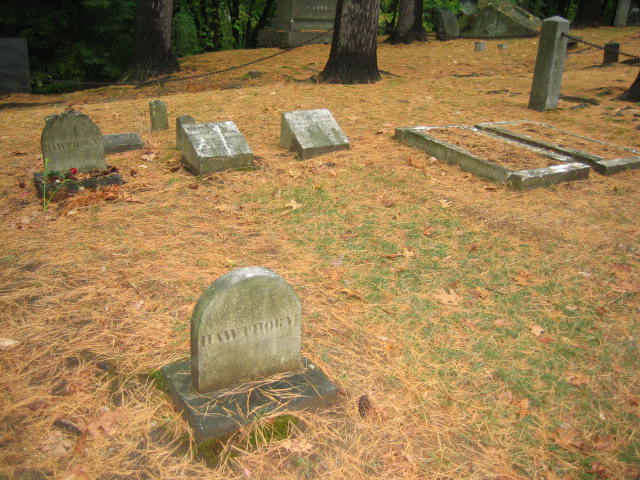
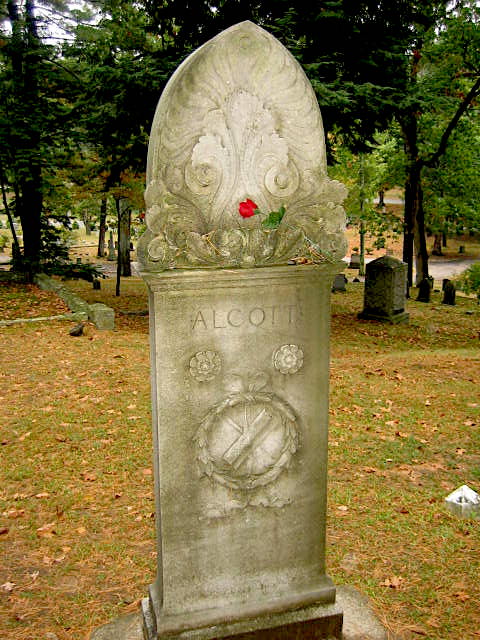
Did You Know? - Alcott was a daughter of noted Transcendentalist Amos Bronson Alcott and Abigail May Alcott. Louisa's father started the Temple School; her uncle, Samuel Joseph May, was a noted abolitionist.
Though of New England parentage and residence, she was born in Germantown, which is currently part of Philadelphia, Pennsylvania. She had three sisters: one elder (Anna Pratt Alcott) and two younger (Elizabeth Sewall Alcott and May Alcott).
The family moved to Boston in 1834 or 1835,[1] where her father established an experimental school and joined the Transcendental Club with Emerson and Thoreau.
During her childhood and early adulthood, she shared her family's poverty and Transcendentalist ideals. In 1840, after several setbacks with the school, her family moved to a cottage on two acres along the Sudbury River in Concord, Massachusetts.
The Alcott family moved to the Utopian Fruitlands community for a brief interval in 1843-1844, and then after its collapse to rented rooms, and subsequently a house in Concord purchased with her mother's inheritance and help from Emerson.
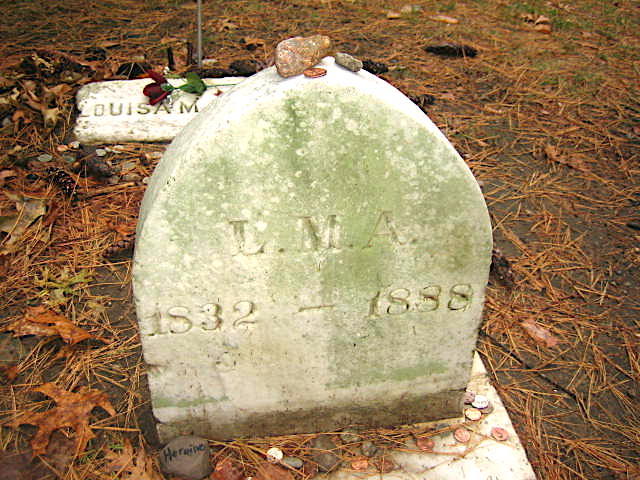
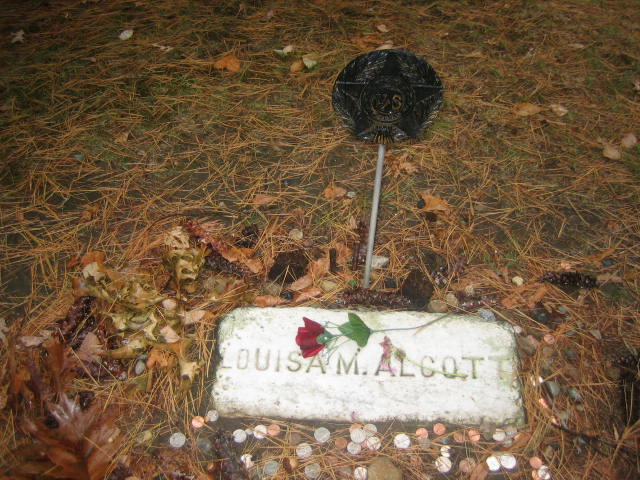

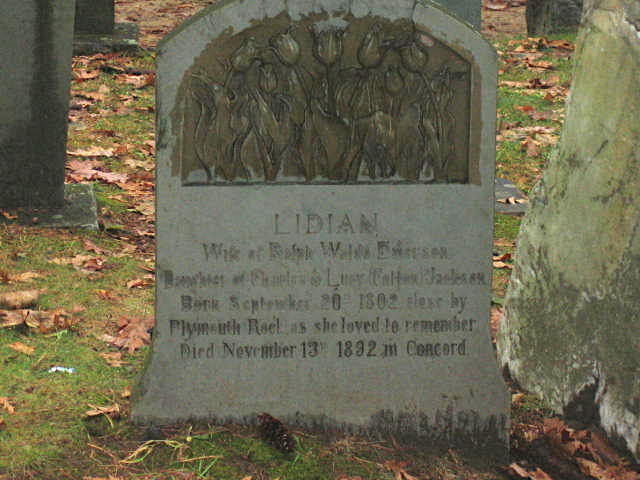
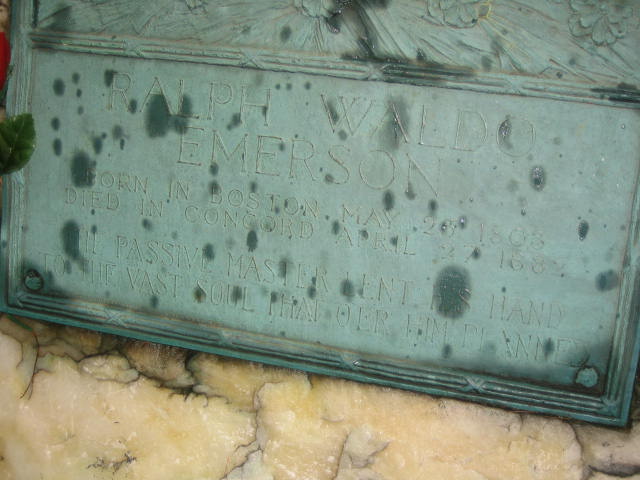
Ralph Waldo Emerson
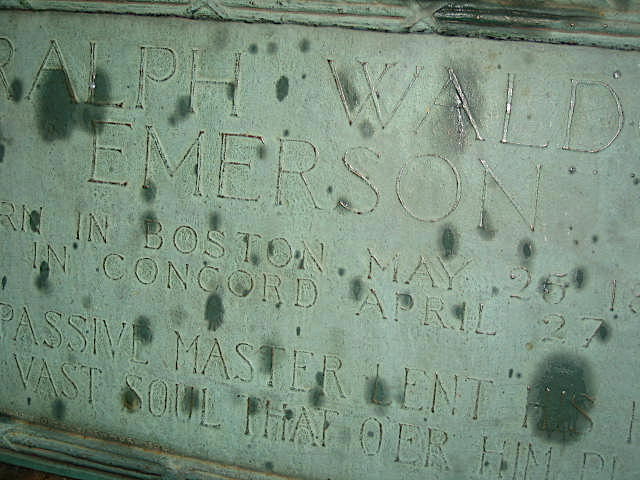
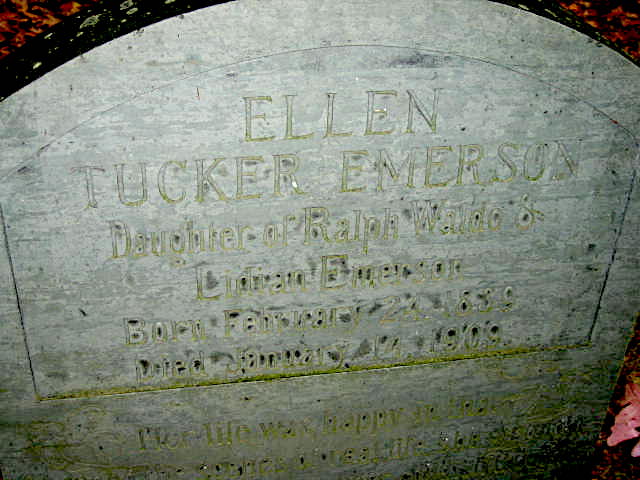
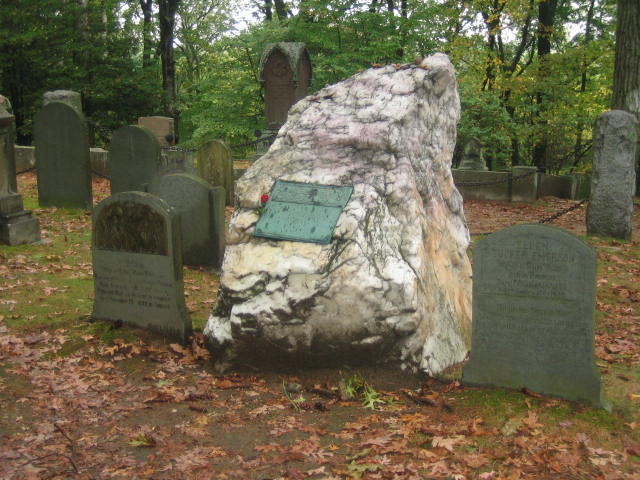



Ralph Waldo Emerson
Did You Know? - Ralph Waldo Emerson (May 25, 1803 – April 27, 1882) was an American essayist, poet, and leader of the Transcendentalist movement in the early nineteenth century.
Ralph Waldo Emerson was born in Boston, son of the Rev. William Emerson, a Unitarian minister in a famous line of ministers. He gradually drifted from the doctrines of his peers, then formulated and first expressed the philosophy of Transcendentalism in his 1836 essay, Nature. As a result of this ground breaking work he gave a speech entitled The American Scholar in 1837, which is considered to be America's "Intellectual Declaration of Independence."
Emerson's father, who called his son "a rather dull scholar", died in 1811, less than two weeks short of Emerson's 8th birthday. The young Emerson was subsequently sent to the Boston Latin School in 1812 at the age of nine. In October 1817, at fourteen Emerson went to Harvard College and was appointed Freshman's President, a position which gave him a room free of charge. He waited tables at Commons, a dining hall at Harvard, reducing the cost of his board to one quarter of the full fee, and he received a scholarship. To complement his meager salary, he tutored and taught during the winter vacation at his Uncle Ripley's school in Waltham, Massachusetts.
After Emerson graduated from Harvard in 1821 at the age of eighteen, he assisted his brother in a school for young ladies established in their mother's house, after he had established his own school in Chelmsford; when his brother went to Göttingen to study divinity, Emerson took charge of the school. Over the next several years, Emerson made his living as a schoolmaster, then went to Harvard Divinity School, and emerged as a Unitarian minister in 1829.


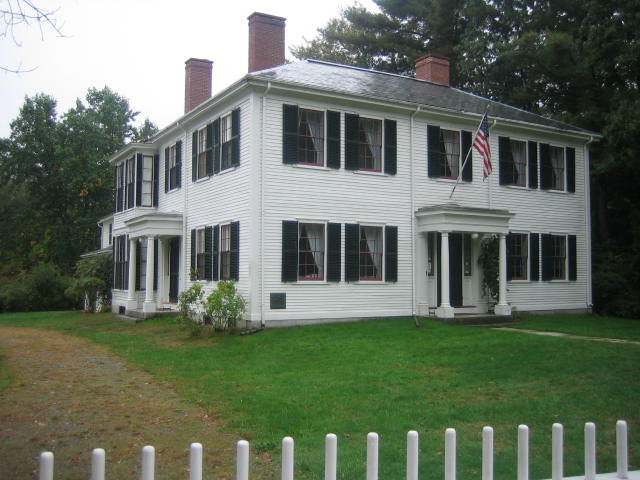

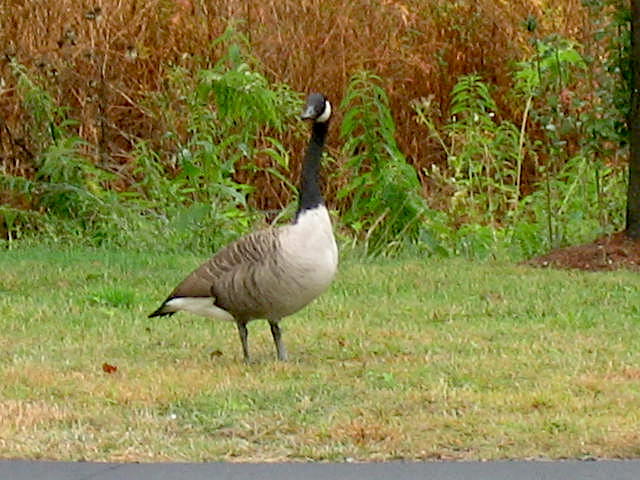


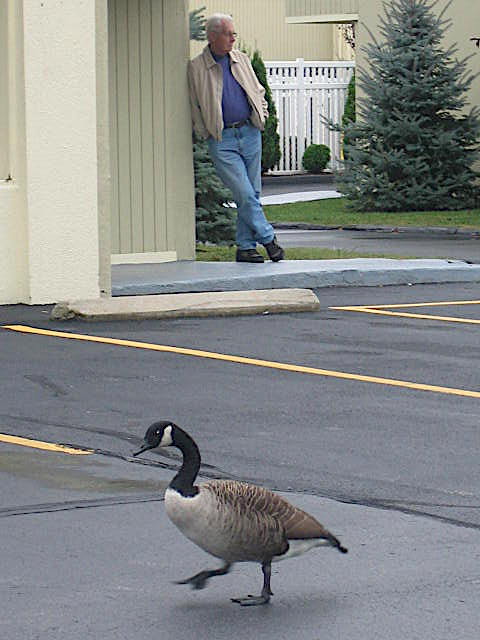 Where is my gun when I need it???
Where is my gun when I need it???

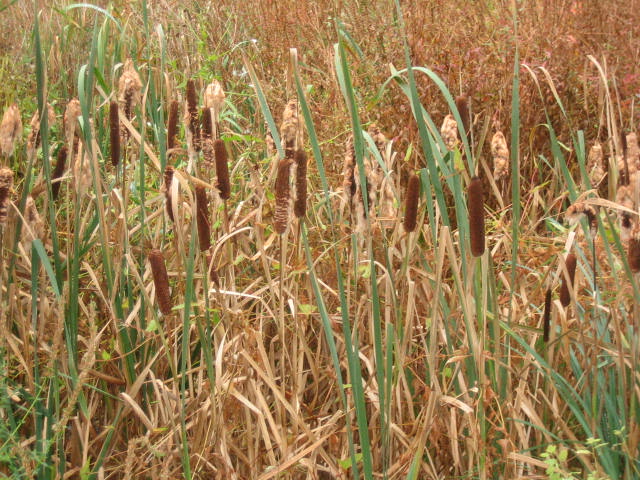

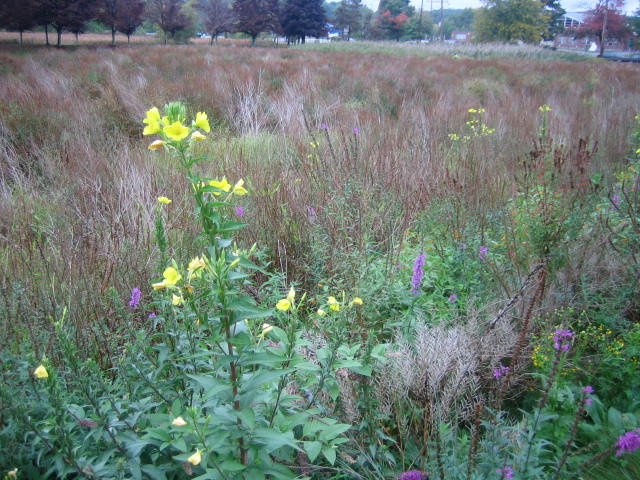
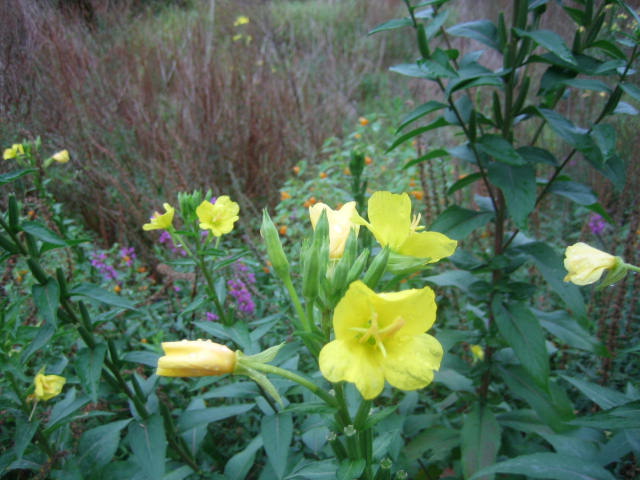

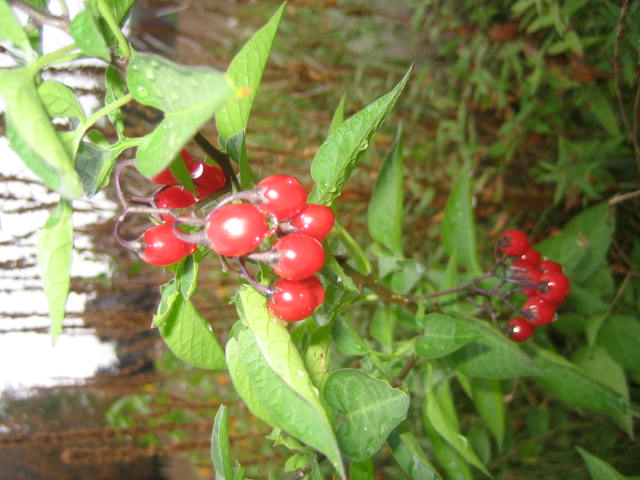

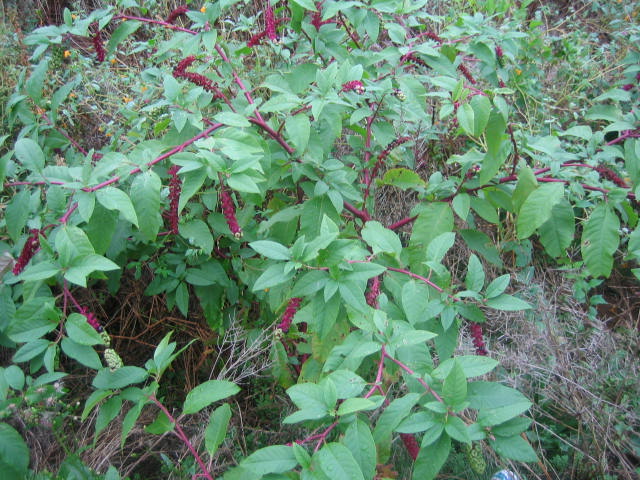
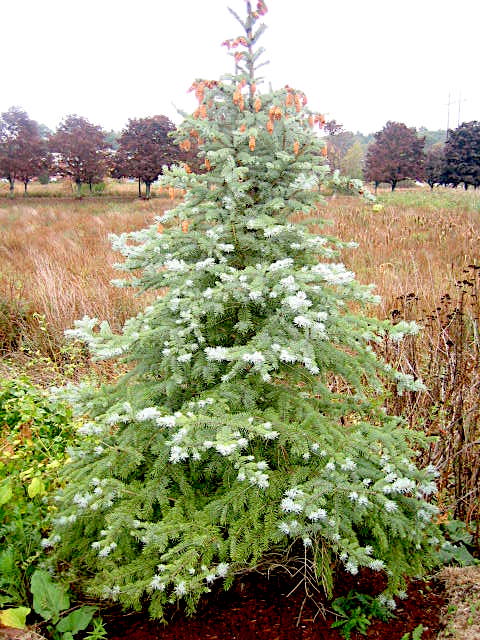
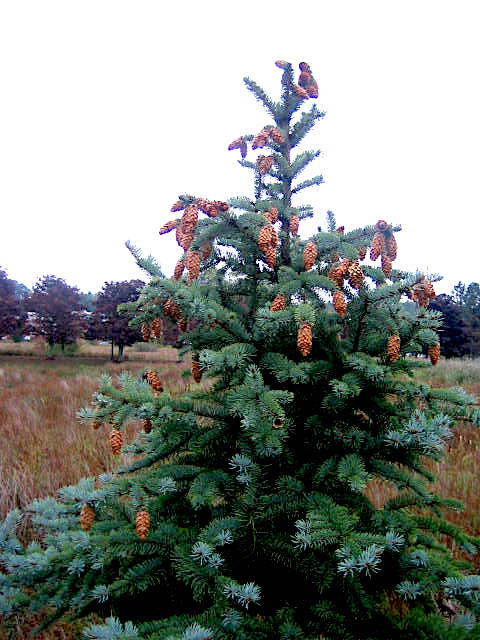
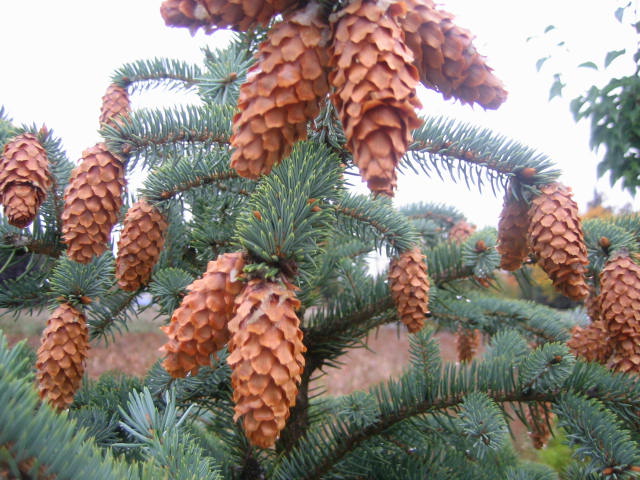
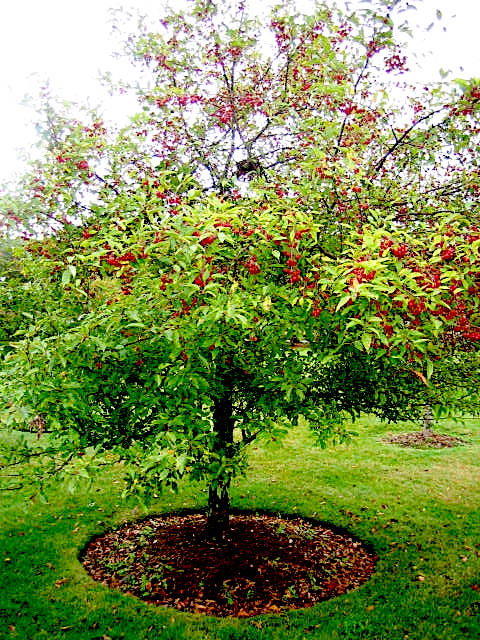
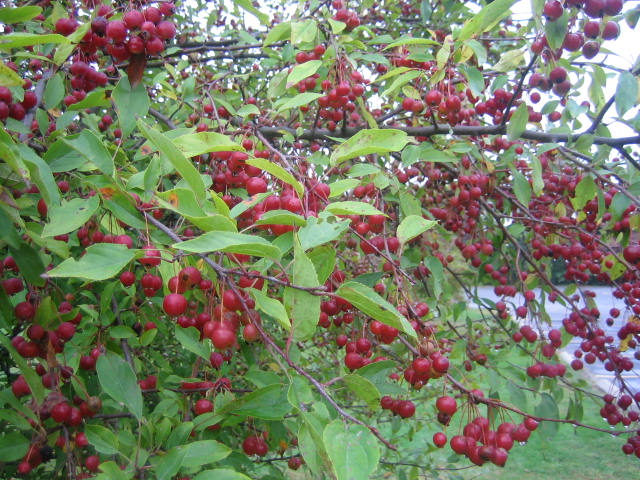
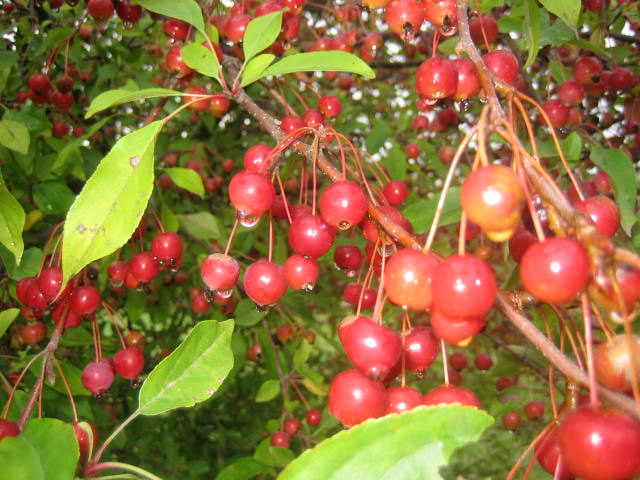
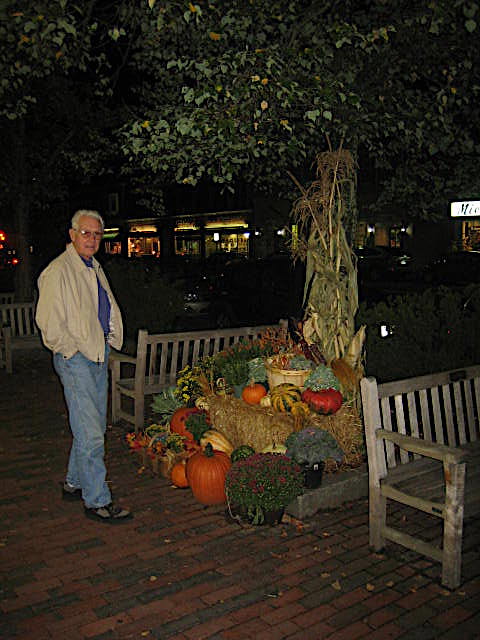

Did You Know? -The Freedom Trail is a red (mostly brick) path through downtown
Boston, Massachusetts which leads to sixteen significant historic sites.
It is a 2.5 mile (4 km) walk from the Boston Common to the Bunker Hill
Monument in Charlestown and is popular with tourists. Part of the
Freedom Trail overlaps with the much longer Boston Harbor Walk. The
Freedom Trail is a unit of Boston National Historical Park.
The freedom trail was originally conceived in 1958 by the local
journalist William Schofield, who has been promoting the idea of linking
important local landmarks with a pedestrian trail since 1951.
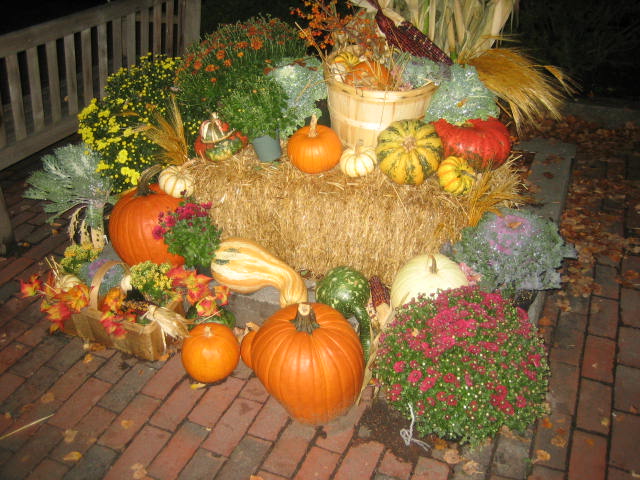
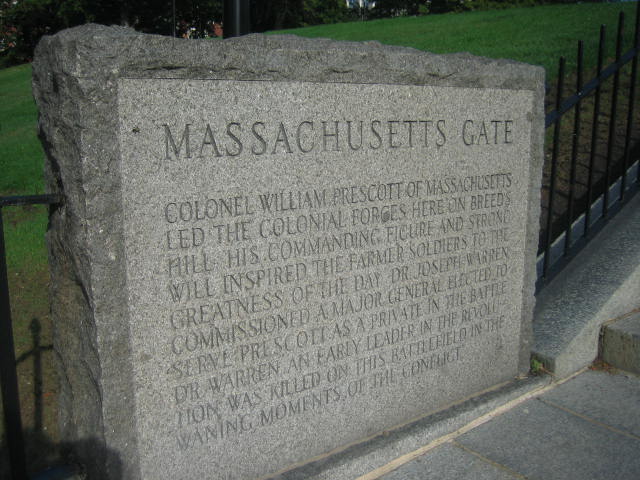

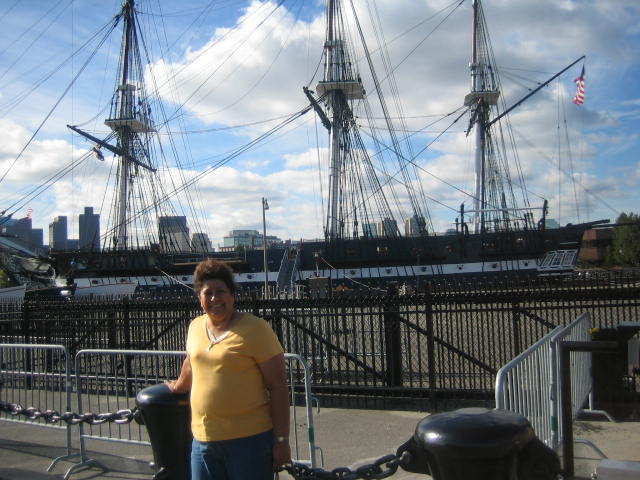
Did You Know? - USS Constitution, known as "Old Ironsides," is a wooden-hulled, three-masted heavy frigate of the United States Navy. Named after the United States Constitution, she is the oldest commissioned ship afloat in the world. The Constitution was one of the six original frigates authorized for construction by the Naval Act of 1794 and was launched in 1797. Joshua Humphreys designed them to be the Navy's capital ships and so Constitution and her sisters were larger and more heavily armed than the standard frigates of the period.
In 1917 she was renamed to Old Constitution, to free the name for a new Constitution, a Lexington class battle cruiser that was never completed. She resumed the name Constitution in 1925 after the new hull was canceled.



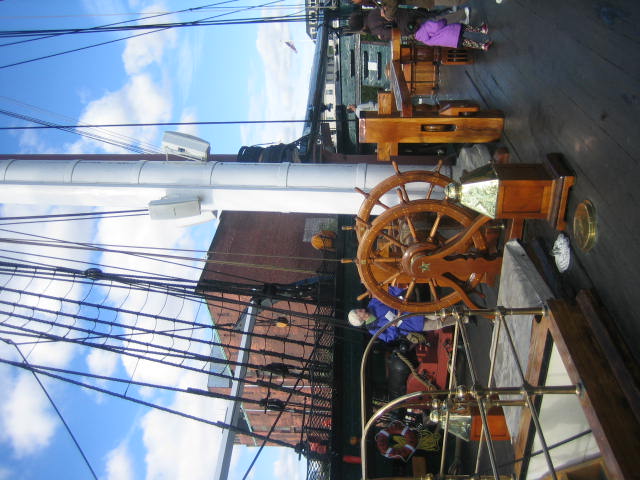




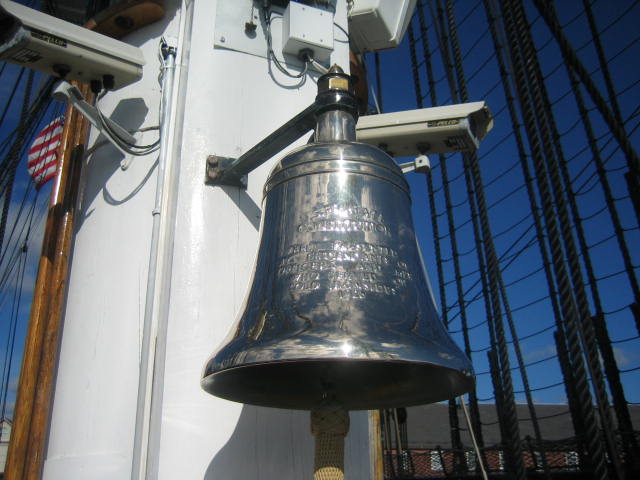

Did You Know? - The modern day role of "Old Ironsides" is that of "ship of state". USS Constitution is today considered the most famous vessel in American naval history. Her mission is to promote the Navy to millions of visitors and observers each year. The crew of 55 sailors participates in ceremonies, educational programs and special events (including sail drill) while keeping the ship open to visitors year-round and providing free tours. The crew are all active-duty sailors and the assignment is considered special duty in the Navy. Traditionally, the duty of captain of the vessel is assigned to an active duty Navy commander.
While Constitution is the oldest fully commissioned vessel afloat, she is not the oldest commissioned. HMS Victory holds the honor of being the oldest commissioned warship by three decades, however Victory is permanently drydocked.
Constitution is one of only two presently commissioned ships in the US Navy known to have sunk an enemy vessel. The other is USS Simpson (FFG-56). No others are still in service.
Constitution is berthed at Pier 1 of the former Charlestown Navy Yard at one end of Boston's Freedom Trail. She is open to the public year round. However, as a commissioned US Navy ship, a visit to "Old Ironsides" is subject to Navy provisions and the fact that she occasionally puts out to sea. Consult her official website for schedule and provisions. The private USS Constitution Museum is nearby, located in a restored shipyard building at the foot of Pier 2.
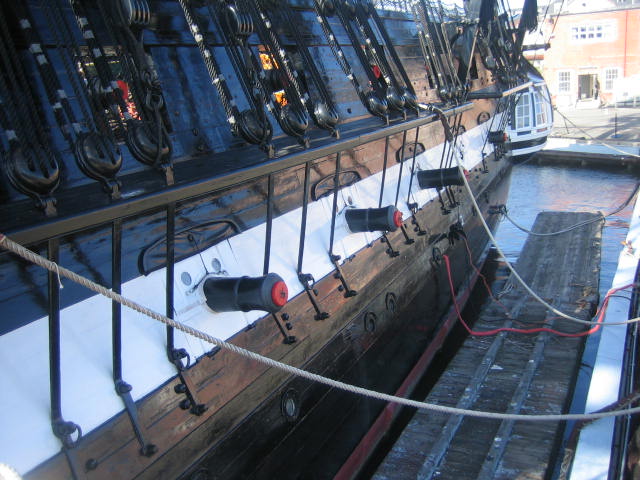
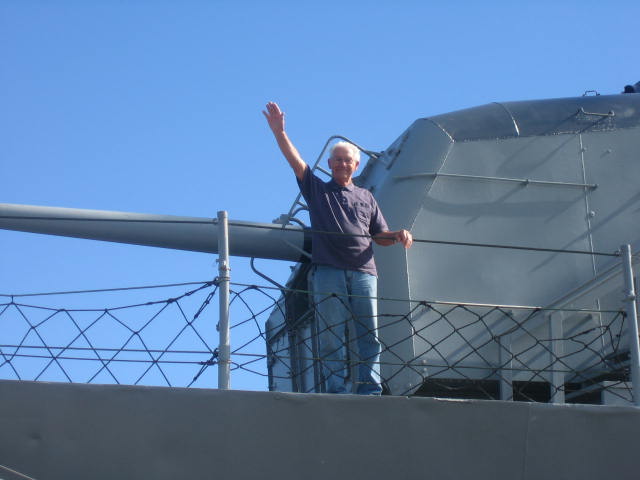
Del Found A More Modern Ship...
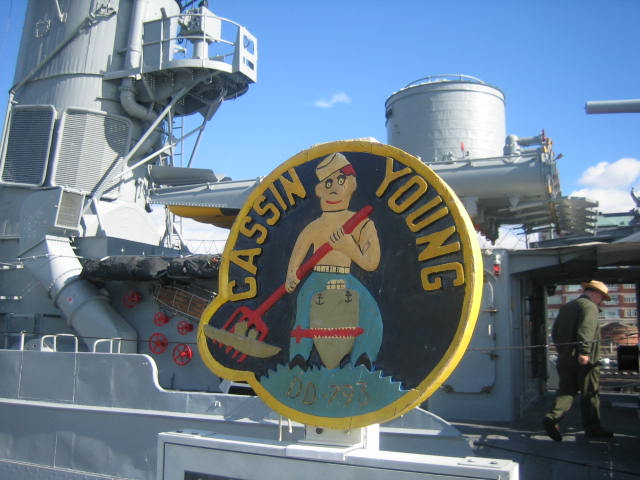
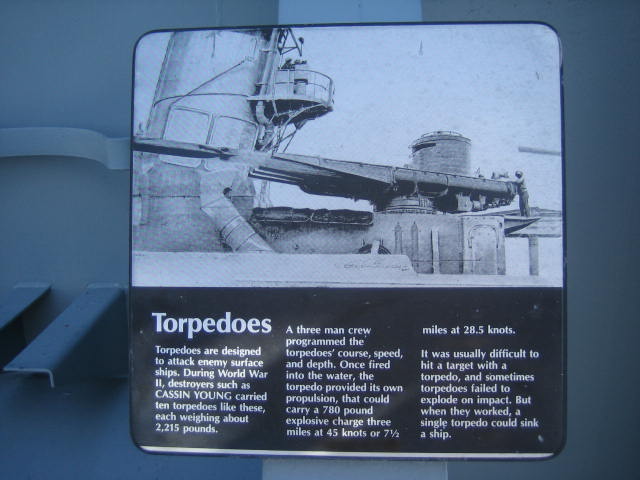





Did You Know? - USS Cassin Young (DD-793), a Fletcher-class destroyer, was a ship of the United States Navy named for Captain Cassin Young (1894–1942), who was awarded the Medal of Honor after Pearl Harbor and killed in the Naval Battle of Guadalcanal.
Cassin Young (DD-793) was launched 12 September 1943 by Bethlehem Steel Corp., San Pedro, California; sponsored by Mrs. C. Young; and commissioned 31 December 1943, Commander E. T. Schrieber in command.
Cassin Young arrived at Pearl Harbor 19 March 1944 to complete her training before sailing on to Manus, where she joined the massive Fast Carrier Task Force (then called TF 58, at other times called TF 38, depending on whether the overall organization was called 5th Fleet or 3rd Fleet). On 28 April, this force sortied for air attacks on Japanese strongholds at Truk, Woleai, Satawan, and Ponape, during which Cassin Young operated as picket ship, assigned to warn her group of possible enemy counterattack.
Cassin Young cleared Okinawa 8 August for repairs at San Pedro, Calif. Here she was decommissioned and placed in reserve 28 May 1946. Recommissioned 8 September 1951, she cleared San Diego 4 January 1952 for her new home port, Newport, R.I. Local operations, overhaul, and refresher training in the Caribbean preceded a period of antisubmarine exercises off Florida from 7 May to 12 June 1953. Her first tour of duty with the 6th Fleet in the Mediterranean took place from 16 September to 30 November 1953. After another period of local operations, and exercises in the Caribbean early in 1954, she cleared Newport 3 May for a round-the-world cruise, which included exercises with the 7th Fleet in the western Pacific, patrols off Korea, and good-will visits to Far Eastern and Mediterranean ports. She returned to Newport 28 November 1954.
Her operations from that time into 1960 included training exercises in the Caribbean and off the eastern seaboard as well as tours of duty in the Mediterranean in 1956, winter 1956–57, and 1959, and a round of visits to ports of northern Europe in 1958. On 6 February 1960 she arrived at Norfolk Naval Shipyard for inactivation, and there she was decommissioned and placed in reserve 29 April 1960.
Cassin Young was struck from the Naval Vessel Register on 1 December 1974. She is preserved as a memorial ship, berthed at Boston Navy Yard in Boston, Massachusetts, across from the USS Constitution


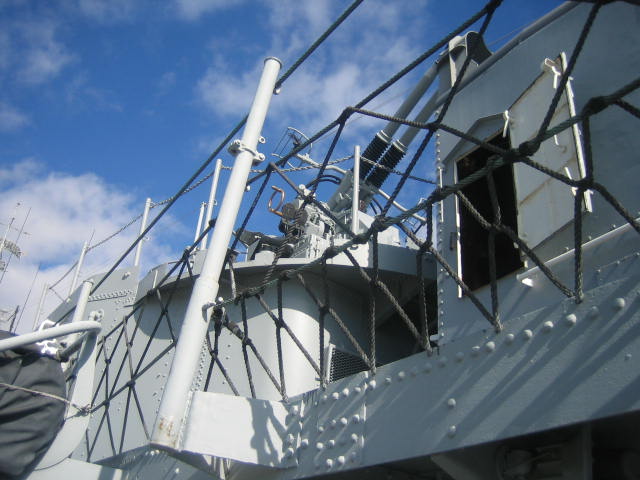
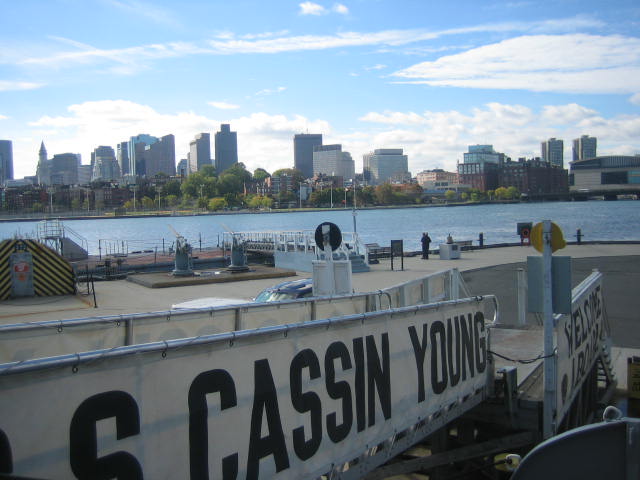
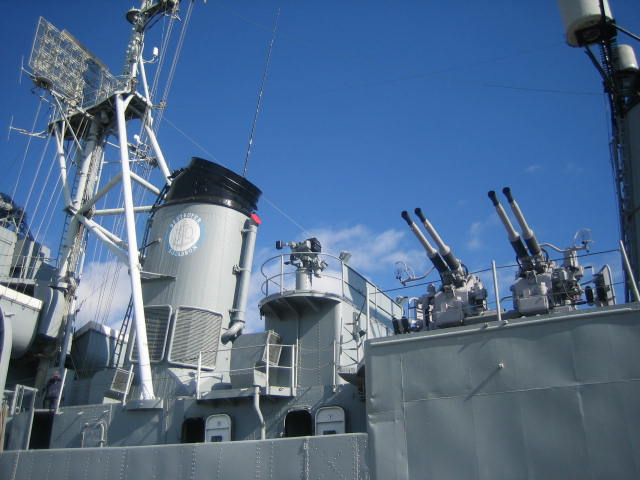
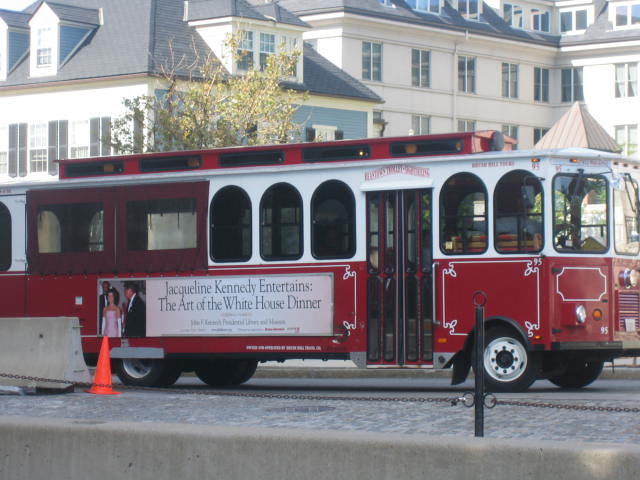
Old North Church

Did You Know? - The Old North Church (officially Christ Church), at 193 Salem Street, in the North End of Boston, Massachusetts, is the location from which the famous "One if by land, and two if by sea" signal is said to have been sent.
This phrase is related to Paul Revere's midnight ride, of April 18, 1775, which preceded the Battles of Lexington and Concord during the American Revolution.
The church is a mission of the Episcopal Diocese of Massachusetts. The Old North Church is the oldest active church building in Boston and is a National Historic Landmark.
Inside the church is a bust of George Washington, which the Marquis de Lafayette reportedly remarked was the best likeness of him he had ever seen.
The Old North Church was built in 1723, and was inspired by the works of Christopher Wren, a British architect who was responsible for rebuilding London after the Great Fire.

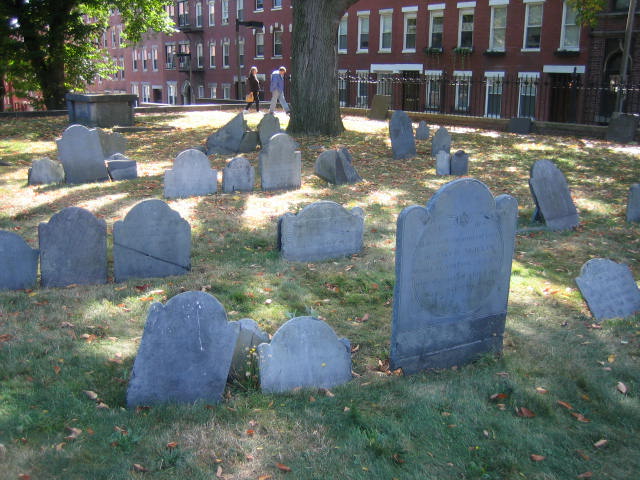

-0000
Copp's Hill
Did You Know? - Copp's Hill is an elevation in the historic North End neighborhood of Boston, Massachusetts. The term is more popularly used to describe the Copp's Hill Burial Ground, located on the same hill, the second oldest cemetery in Boston, founded in 1659 (the oldest is the burial ground at King's Chapel). Copp's Hill is bordered by Hull Street, Charter Street and Snow Hill Street. It was named after William Copp, a shoemaker who was the former landowner.
Among the thousands of Bostonians buried here are William Copp's children, Increase Mather, Cotton Mather, Robert Newman, the patriot who placed the signal lanterns in the steeple of Old North Church for Paul Revere's midnight ride to Lexington and Concord, and Prince Hall, the father of Black Freemasonry. On the Snow Hill Street side are the many unmarked graves of the blacks who lived in the New Guinea community at the foot of the hill. In addition to the graves there are 272 tombs, most of which bear inscriptions that are still legible.
When the first settlers arrived in the 1630s they built a windmill atop the hill to grind grain. Governor Winthrop recorded a mill built there in 1636, and three others were put up by 1650. The hill was, therefore, first called 'Windmill Hill' or 'Windmill Point' and later, when mills were built elsewhere in the town, became known as 'Snow Hill' (possibly after Snow Hill, London). The town bought the site from Copp in 1659 and called it the 'North Burying Ground'. Three further adjacent sections were acquired subsequently but it is no longer possible to discern the original boundaries.

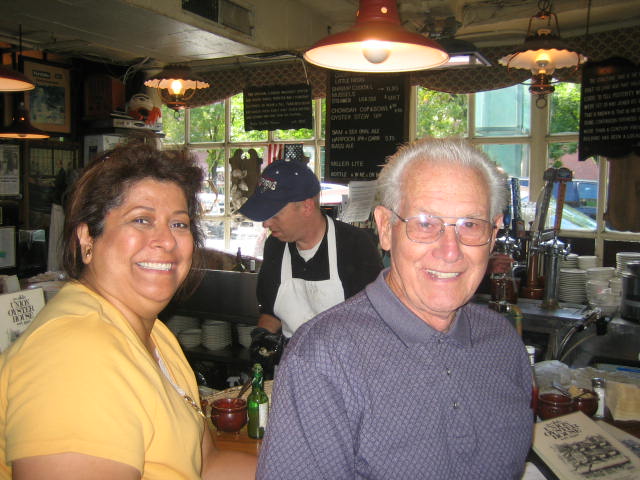 Awe Shucks...
Awe Shucks...

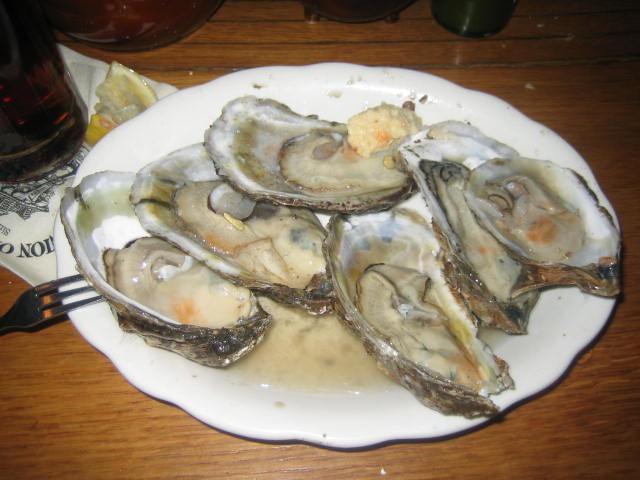


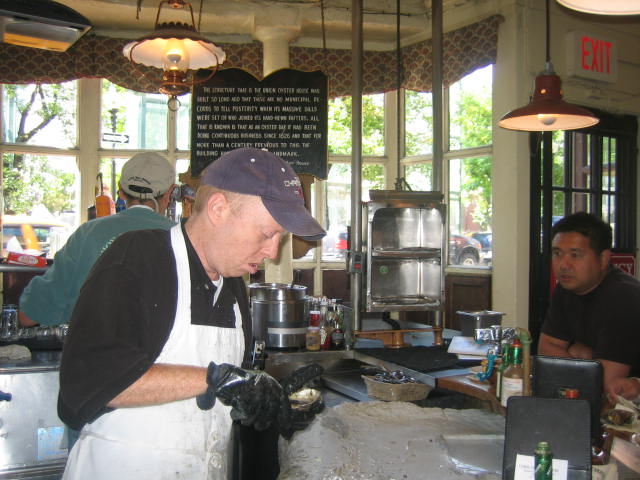

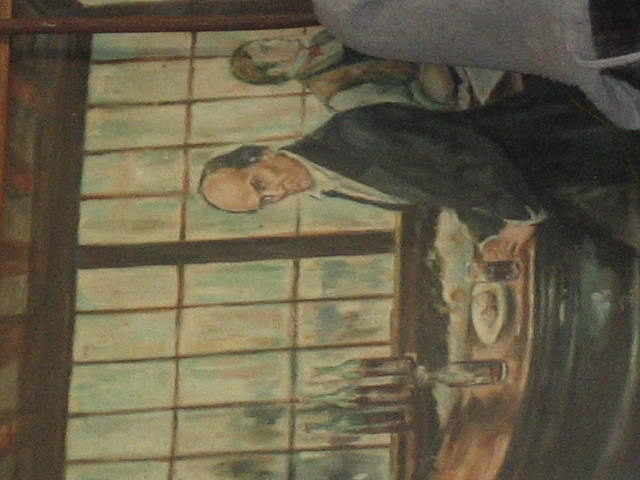


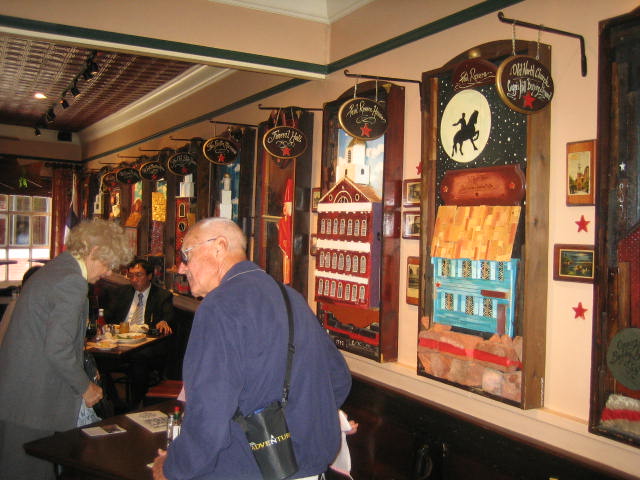


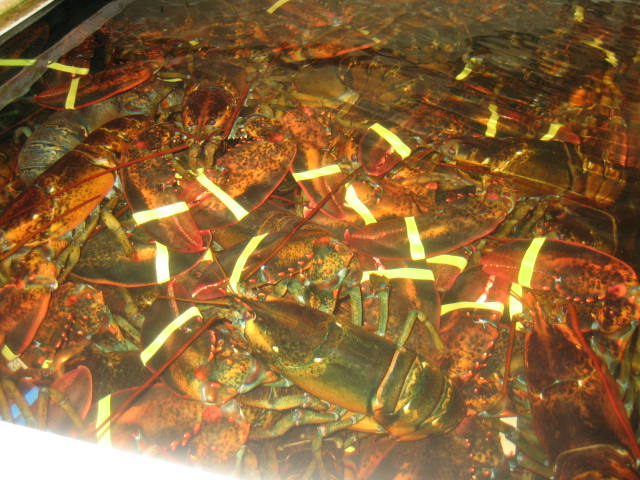

Quincy Market
Did You Know? -
By the time Boston was incorporated as a city in 1822, downtown
commercial demand grew beyond the capacity of Faneuil Hall. To provide
an expansion of shop space, Quincy Market was built, as an indoor
pavilion of vendor stalls.
Designed by Alexander Parris, the building was built immediately east of
and "behind" Faneuil Hall, which at the time sat next to the waterfront.
Thus Quincy Market was at harbor's edge at the town dock. In an early
example of Boston's tendency for territorial growth via landfill, part
of the harbor was filled in with dirt to provide a plot of land for the
market. The commercial growth spawned by the new marketplace led to the
reconstruction or addition of six city streets.
From its beginning, the Market was largely used as a produce and
foodstuff shopping center, with various grocers of such goods as eggs,
cheese, and bread lining its inside walls. Digging performed for
expansion of the market in the late 1970s uncovered evidence of animal
bones, suggesting that butchering work was done on-site. In addition,
street vendors took up space outside the building in its plazas and
against its outside walls. Some surviving signs of early food and
supplies merchants hang today in the upstairs seating hall.

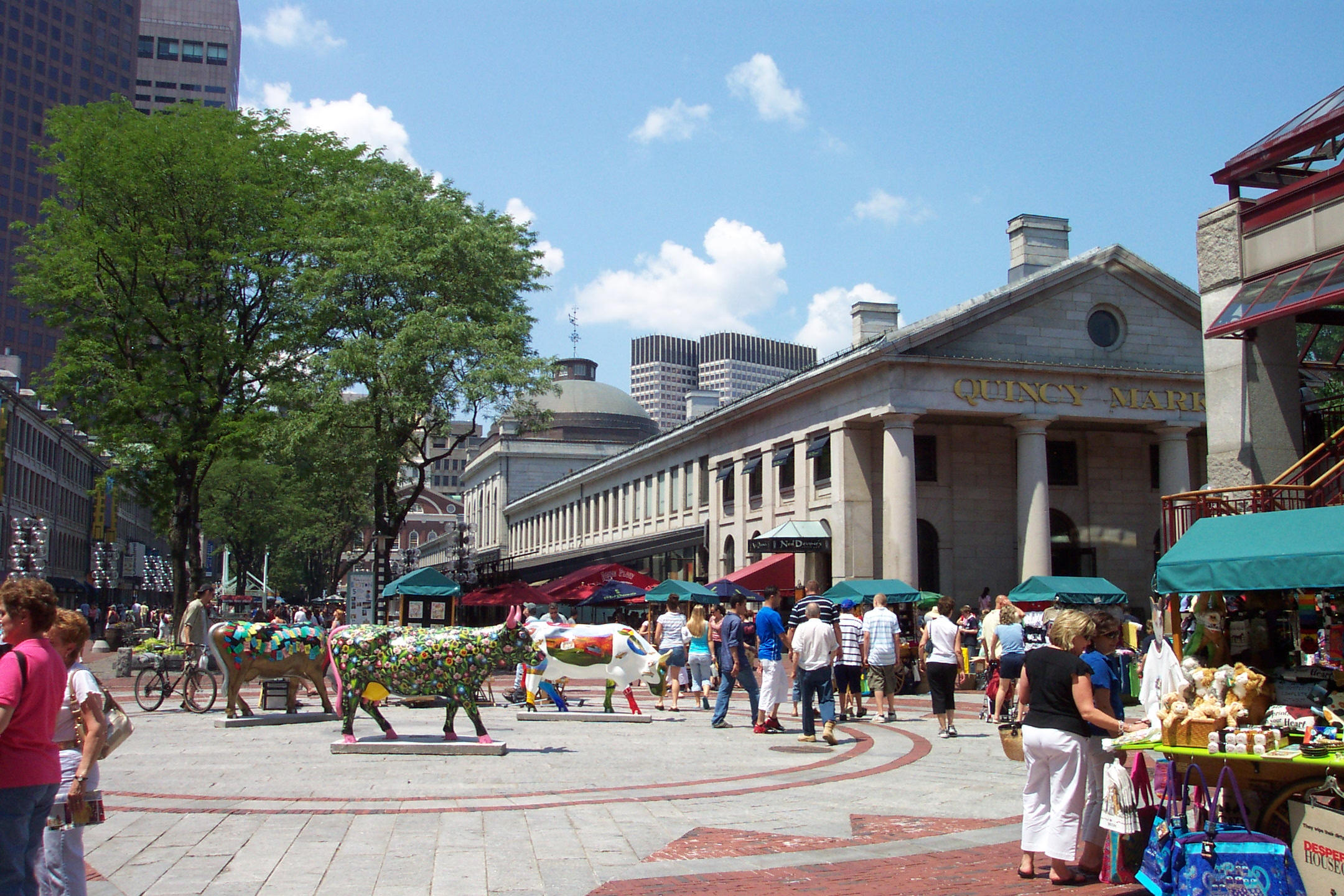
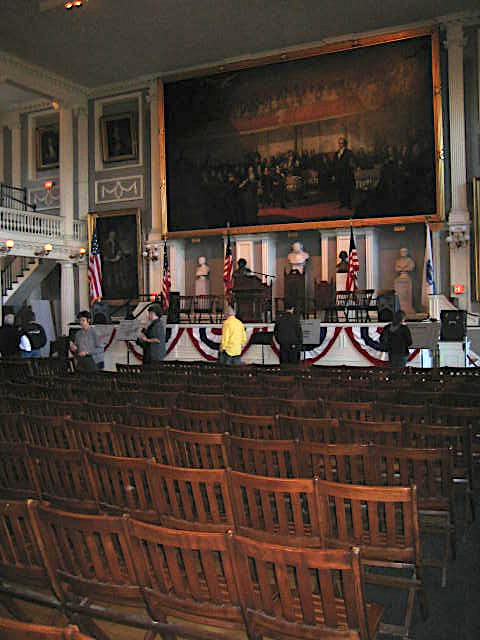
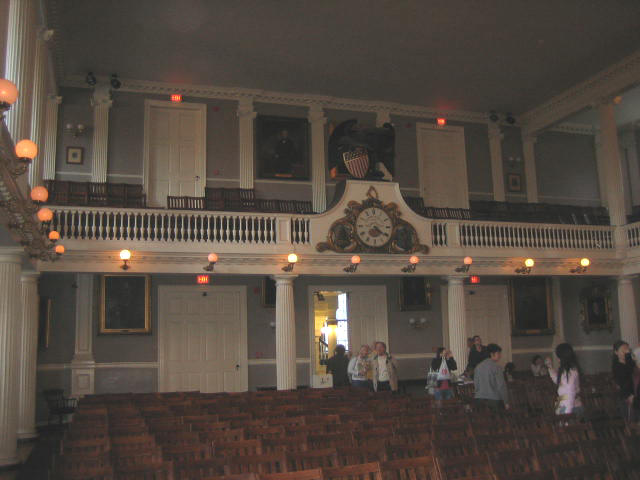


Sam Adams (Not The Beer)
Did You Know? - Samuel Adams (September 27 [O.S. September 16] 1722[2] – October 2, 1803) was an American statesman, politician, writer and political philosopher, brewer, and one of the Founding Fathers of the United States. Adams was instrumental in garnering the support of the colonies for rebellion against Great Britain, eventually resulting in the American Revolution, and was also one of the key architects of the principles of American republicanism that shaped American political culture.
Born in Boston, Massachusetts, Adams was brought up in a religious and politically active family. After being educated at Boston Latin School and Harvard College, Adams became a mercantile businessman, but this proved not to be his vocation and he soon turned to politics, and became an influential political writer and theorist. Adams established himself as one of the voices of opposition to British control in the colonies; he argued that the colonies should withdraw from Great Britain and form a new government. Adams called for the colonists to defend their rights and liberties, and led town meetings in which he drafted written protests against Parliament's colonial tax measures such as the Stamp Act of 1765. Adams played a prominent role during protests against the Stamp Act, and in the events of the Boston Tea Party in 1773. He participated in the Continental Congress. He also advocated the adoption of the Declaration of Independence at the Second Continental Congress.

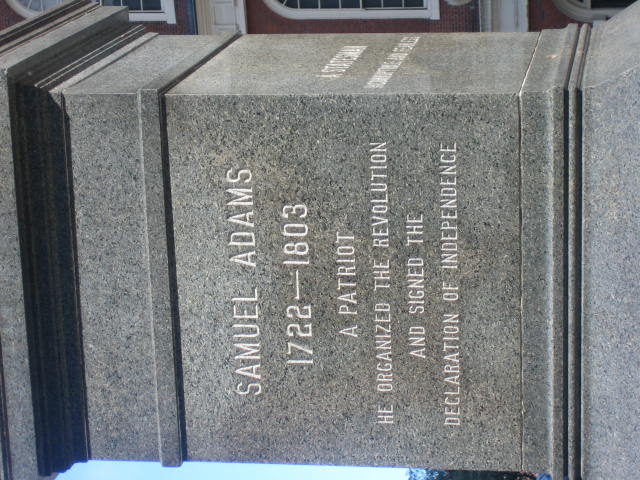

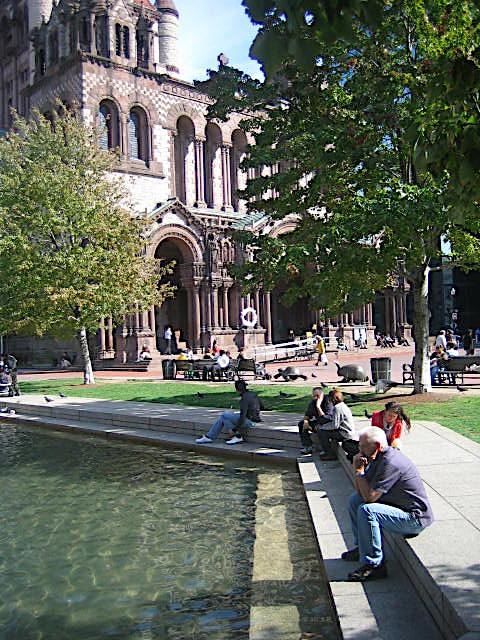


Did You Know? - Trinity Church in the City of Boston, located in the Back Bay of Boston, Massachusetts, is a parish of the Episcopal Diocese of Massachusetts. The congregation, currently standing at approximately 3,000 households, was founded in 1733. The current rector is The Reverend Anne Bonnyman. Four services are offered each Sunday, and weekday services are offered three times a week from September through June.
In addition to worship, the parish is actively involved in service to the community, pastoral care, programs for children and teenagers, and Christian education for all ages.
The church is home to several high-level choirs, including the Trinity Choir, Trinity Schola, Trinity Choristers, and Trinity Chamber Choir.
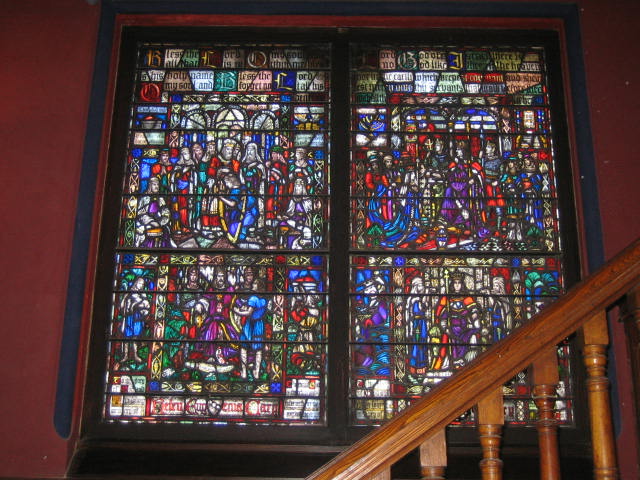
Did You Know? - After its former site burned in the Great Boston Fire of 1872, the current church complex was erected under the direction of Rector Phillips Brooks (1835-1893), one of the best-known and most charismatic preachers of his time. The church and parish house were designed by Henry Hobson Richardson and construction took place from 1872 to 1877, when the complex was consecrated. Situated on Copley Square in Back Bay, Trinity Church is the building that established Richardson's reputation. It is the birthplace and archetype of the Richardsonian Romanesque style, characterized by a clay roof, polychromy, rough stone, heavy arches, and a massive tower. This style was soon adopted for a number of public buildings across the United States, and was the first American architectural style imitated in Europe and Canada.
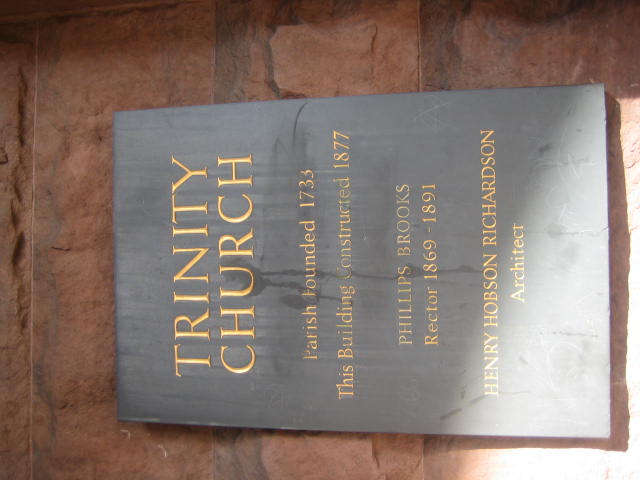
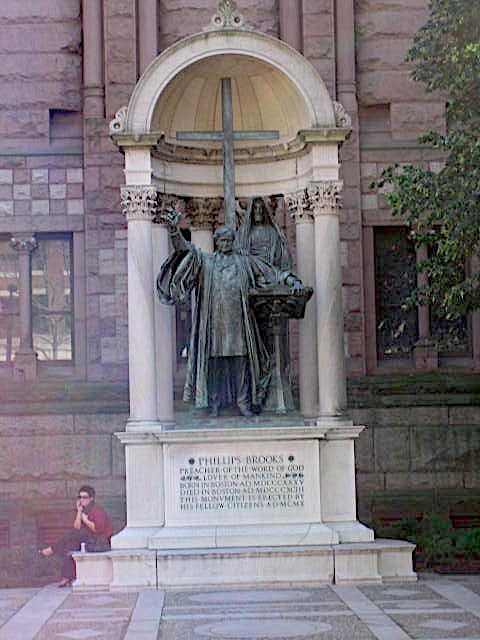
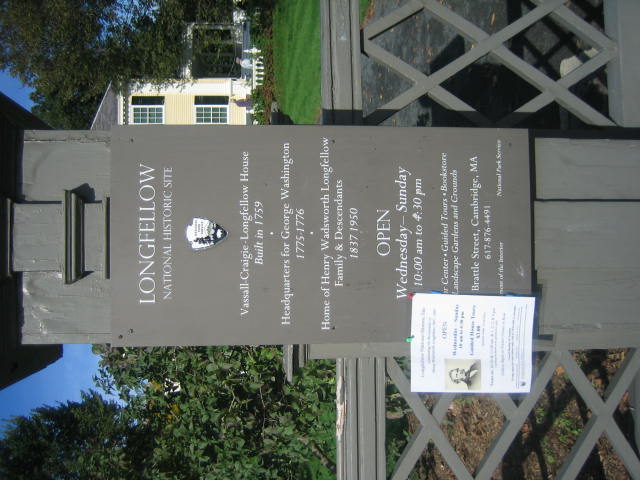
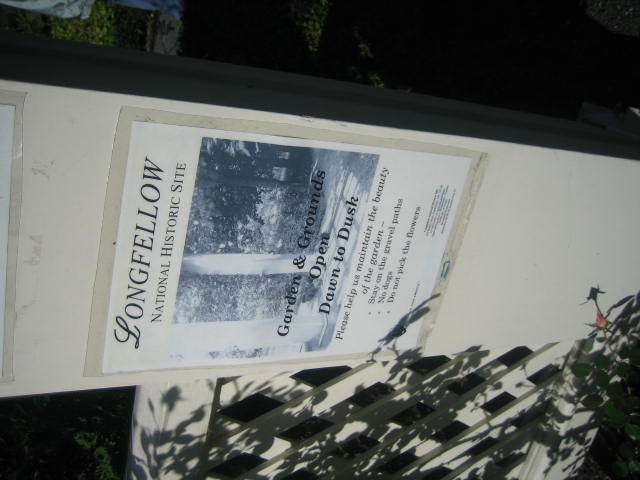
Did You Know? - Henry Wadsworth Longfellow (February 27, 1807 – March 24, 1882) was an American poet whose works include "Paul Revere's Ride", "A Psalm of Life", "The Song of Hiawatha", "Evangeline", and "Christmas Bells". He also wrote the first American translation of Dante Alighieri's "Divine Comedy" and was one of the five members of the group known as the Fireside Poets. Longfellow was born and raised in the region of Portland, Maine. He attended university at an early age at Bowdoin College in Brunswick, Maine. After several journeys overseas, Longfellow settled for the last forty-five years of his life in Cambridge, Massachusetts.




